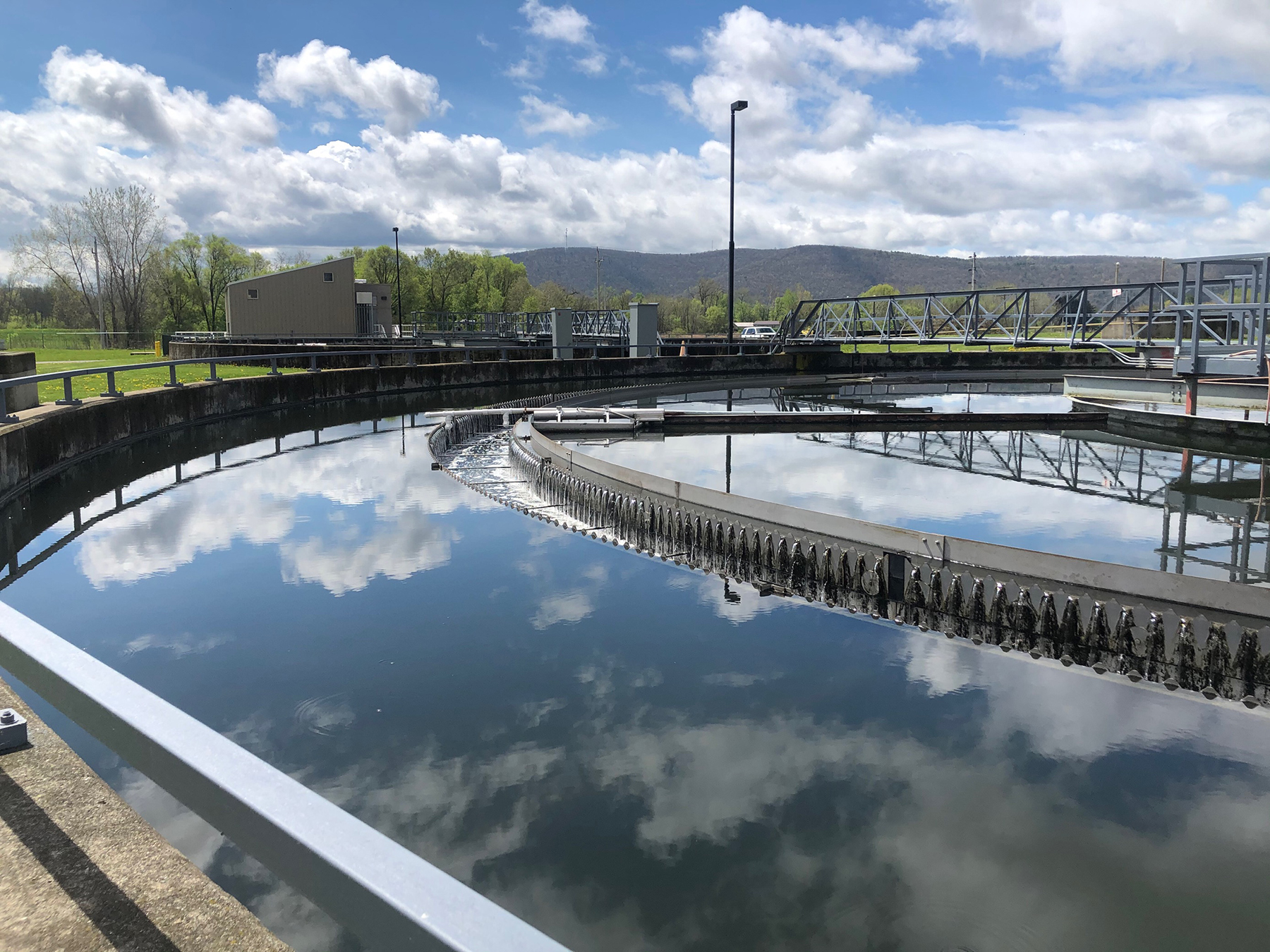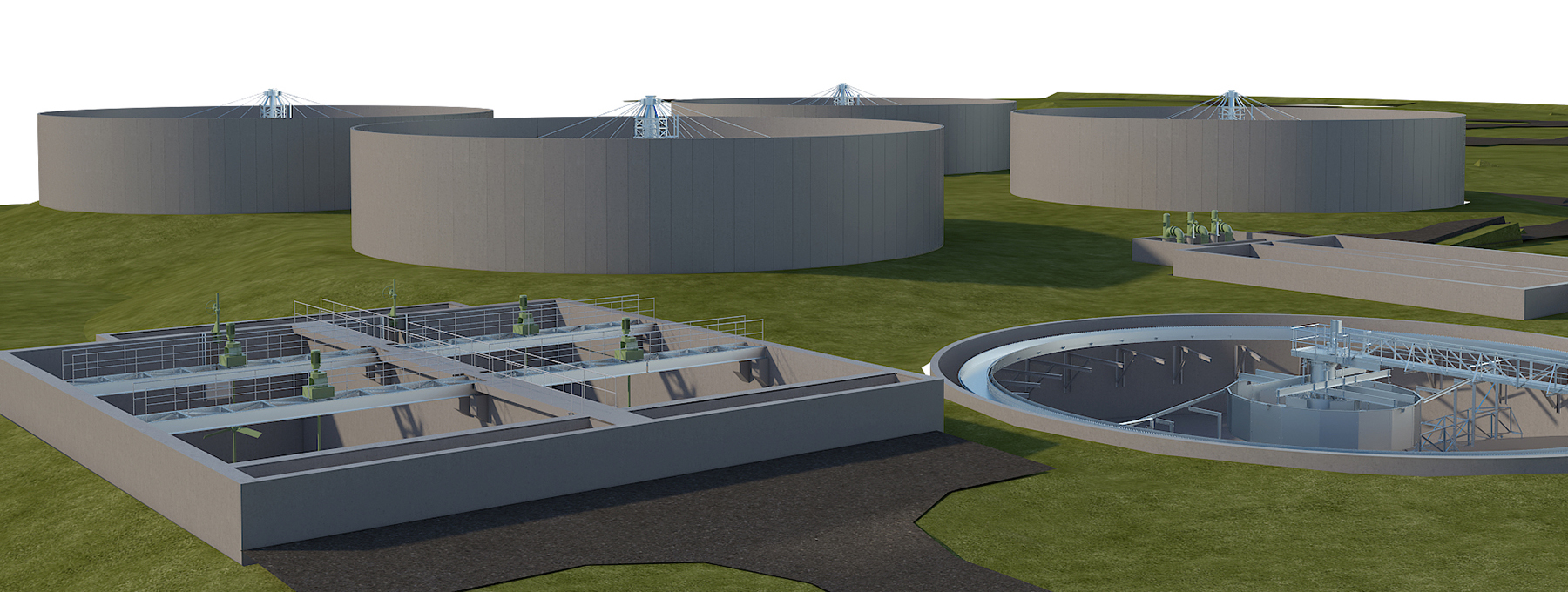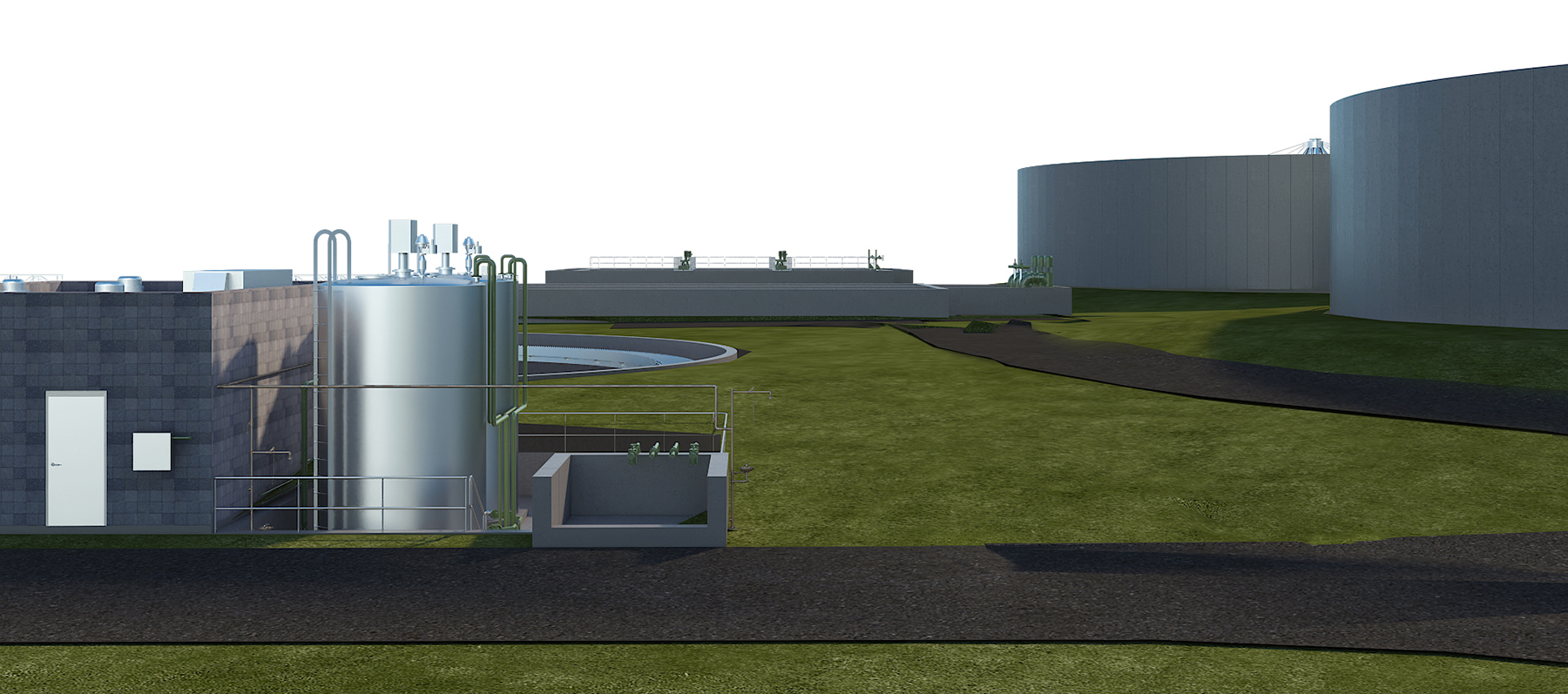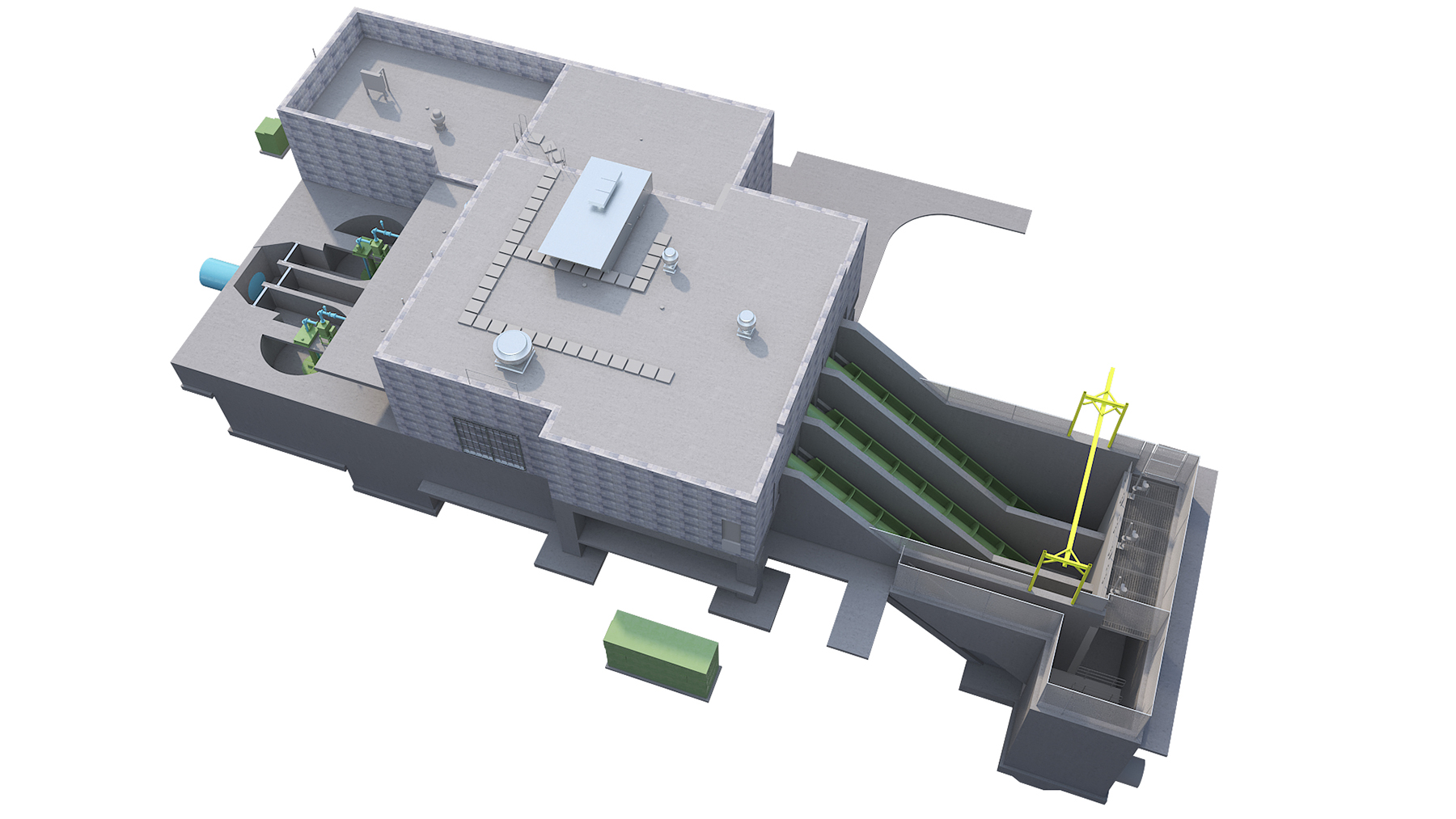By Jay Landers
Located in the Southern Tier of New York state, on the border with Pennsylvania, Chemung County is far from the Chesapeake Bay. However, the county lies within the bay’s vast watershed, making it subject to the increasingly stringent regulations intended to improve the bay’s water quality. Because neither of the county’s two wastewater treatment plants can meet the nutrient limits that are scheduled to take effect in early 2025, Chemung County had to decide whether to upgrade both aging plants or consolidate them into a single facility. Having opted for consolidation, the county and its design partners are moving quickly to ensure that the $160 million effort to consolidate the facilities will be operational in time to meet the upcoming regulatory deadline.
Old facilities, new deadlines
Chemung County’s two wastewater treatment facilities serve a total of approximately 63,000 people. At almost 60 years old, the 12.2 mgd Lake Street WWTP includes a headworks for screening and grit removal, primary clarification, trickling filters, and secondary clarification, says John Perriello, P.E., the project manager for Arcadis, which is providing design and construction management services for the facility consolidation project. Larson Design Group is responsible for the design of the conveyances between the two treatment plants.
The second plant, the 12 mgd Milton Street WWTP, is nearly 35 years old and uses much the same treatment steps as its Lake Street counterpart, though it also provides disinfection by means of ultraviolet light.

Both treatment facilities discharge to the Chemung River, which is a tributary to the Susquehanna River, one of the five main contributors to the Chesapeake Bay.
In accordance with the regulations for the Chesapeake Bay, the existing nutrient effluent limits for both WWTPs will be “ratcheted down” on Jan. 1, 2025, says Ali Rennie, EIT, the senior wastewater engineer for the Chemung County Sewer Districts, the entity that owns and operates the two facilities. By that date, Chemung County will have to begin complying with 12-month rolling mass load limits of 36,600 lb/year for total phosphorus and 584,000 lb/year for total nitrogen, Rennie says. The nutrient limits are intended to prevent the formation of algal blooms that impair water quality in the bay. At the same time, the county will have a 1 mg/L monthly average concentration limit for total phosphorus. Ultimately, the stricter effluent limits are “what’s driving our need for this project,” she notes.
Cost-effective consolidation
In preparation for the upcoming regulatory changes, Chemung County in 2018 conducted a study that concluded that rather than upgrading both facilities, it would be 19% more cost-effective to have all treatments done at the Milton Street location and decommission the Lake Street facility, according to Rennie.
Two key factors drove the decision to consolidate the two plants, Perriello says. First, the Milton Street WWTP is on a large tract of land, making the expansion of the facility “relatively easy,” Perriello notes. Second, the 48 in. diameter discharge pipeline for the Lake Street facility extends 3 mi to its outfall, which makes it easier to simplify the consolidation process. “We can use what was the plant outfall as a raw sewage interceptor and then just continue it on down to the Milton facility to consolidate the flows at one treatment plant,” he says. “That really helped solve the economic issue of consolidating the two plants.”
To this end, a new 48 in. diameter pipeline will be constructed to accept the flows from what is now the Lake Street facility’s outfall pipeline. The new pipeline will convey the wastewater by gravity to the consolidated facility, where a pump station will raise the flows to the level of the treatment system. Because the two WWTPs are on opposite sides of the Chemung River, the new pipeline will include a three-barrel siphon at the point where it passes beneath the waterway. The three barrels of the siphon will be designed to maintain a sufficient velocity to prevent solids from settling out of the liquid stream during periods of average flows, higher flows, and peak flows, Perriello says. Upon reaching the far side of the river, the three barrels will combine into a single pipeline.
Meanwhile, linking the collection systems of the Lake Street and Milton facilities will confer additional environmental benefits, Perriello says. The Milton WWTP receives flows from a combined sewer system that has several outfalls for discharging overflows. “What we realized early on is that if we provide an interconnection between these two large interceptor sewers, we could take advantage of additional conveyance capacity to get flow down to the Milton Street plant to treat it, and thereby help eliminate some of the (combined sewer overflows) upstream,” he says. “It’s a nice added benefit of the program.”
Cutting costs
The consolidated regional facility will have a design treatment capacity of 28.2 mgd for average days and the potential of a managed capacity of 48.6 mgd on peak flow days. The facility will receive new headworks equipment, two new primary clarifiers, two new trickling filters, two new secondary clarifiers, and an additional treatment train bank of UV lights for disinfection, says Ben Taylor, EIT, a project engineer for Arcadis. A moving bed biofilm reactor will be added to further treat effluent from the trickling filters.
High-density media will be added to the trickling filters to facilitate the complete oxidation of biochemical oxygen demand and effect nitrification. Denitrification will be conducted by means of the MBBR. However, not all of the trickling filter effluent will undergo treatment in the MBBR. “We’ll be peeling off a portion of the effluent,” Perriello says. “Essentially, we’ll be sending enough of the flow” to the MBBR to ensure that the WWTP meets its nitrogen discharge limit, he notes.

As for phosphorus removal, Arcadis conducted an “exhaustive evaluation” and determined that tertiary filtration would not be necessary, Perriello says. Instead, coagulation and flocculation will be conducted within the secondary clarifiers to remove phosphorus. Obviating the need for tertiary filtration “saved millions of dollars,” he notes.

Solids handling was another area in which Arcadis found a way to reduce project costs significantly. Because the consolidated facility will have to contend with essentially double the volume of solids that the Milton Street WWTP currently handles, the county’s preliminary plan for the project called for adding digesters to the facility’s existing two-stage anaerobic digestion system.
“We looked at it and said we could utilize what’s there by doing recuperative sludge thickening,” Perriello says. Also known as the Torpey process, recuperative sludge thickening entails removing a portion of the stream from the primary digester, thickening it, and then returning it to the digester. In this way, “you can free up capacity in the digester tank,” he says. “It’s a huge cost savings by not having to build new digesters.”
On the fast track
For project participants, the Jan. 1, 2025, deadline looms large. “It’s an extremely aggressive schedule” for both design and construction, Perriello says. Design documents must be submitted by March 1, 2022, to the New York State Department of Environmental Conservation for approval.

To expedite the design process, Arcadis meets every week with the CCSD “to keep them on board with our design the entire way,” Taylor says. What is more, “we are doing the design completely in 3D in a (building information modeling) environment,” he notes. This approach facilitates much faster client reviews, he says.
Another challenge confronting the design team involves the need to manage the timing of the work performed at both WWTPs to ensure timely completion of the overall project. “We have to carefully manage which treatment processes get upgraded first and which items fall on the critical path,” Taylor says. “There’s a lot of complexity with trying to sequence everything appropriately in order to minimize construction impact, minimize construction duration, and minimize construction cost.”



